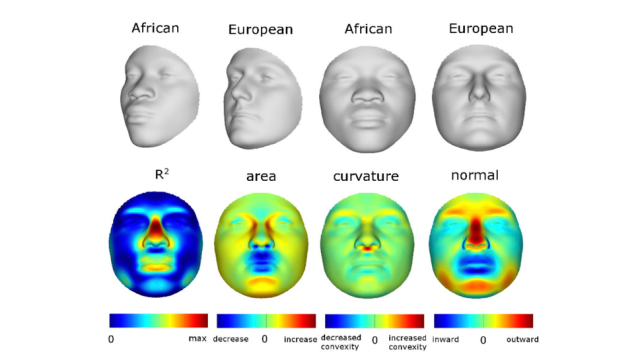A little less than a year ago, researchers announced a new technique that used DNA analysis to recreate the image of a person’s face. It was a stunning idea — but a new a New York Times report reveals that there’s more than one big problem with the sci-fi promise of DNA-based mugshots.
The technique, called forensic DNA phenotyping, promised to be a more objective, statistically based approach to creating DNA-based mugshots than previous attempts — and they looked pretty close! Scientists at Penn State and the KU Leuven scanned the faces of some 600 subjects of mixed European and West African and then created a mess of 7,000 points on the images to create maps of their features. The researchers then tested each subject for 76 genetic variants and arrived at 20 that could be used to determine face shape.
But when it comes to solving crimes — and proving guilt or innocence — those remaining variables become pretty problematic.
First, there’s the issue of accuracy. Various companies like Parabon NanoLabs, Identitas, and Illumina have now introduced products for law enforcement that promise to predict the traits of suspects in a case. When the Times spoke to police, they weren’t able to report that any cases were solved thanks to the video game avatar-looking likenesses that were created through forensic DNA phenotyping.
The Times even tried out the technology with its own reporters. A handful of people were able to correctly identify one coworker of Asian-European descent. Most people thought that the white male avatar was just Andrew Ross Sorkin, one of the more famous white male reporters at the paper. (It was not.)
This brings us to the other major issue: racial bias. Because the technique developed by the teams at Penn State and KU Leuven used subjects of mixed European and West African descent, the system just isn’t as accurate with subjects of other ethnicities. “This leads to a technology that is better able to make faces that are African-American,” Stanford anthropology professor Duana Fullwiley told The Times. The scientists themselves admit that their analysis only accounts for about 23 per cent of the variation in faces, and again, there might be a bias towards African or European features.
Does this mean that DNA-based mugshots are useless? Not quite. The science behind it is still developing, which means that using it in criminal cases is hasty — police will want to wait a little longer before spending taxpayer dollars on this expensive analysis. At best, the results will be almost useful. At worst, they will be just another form of racial profiling. [New York Times, New Scientist, Nature, io9]
Image: Penn State
